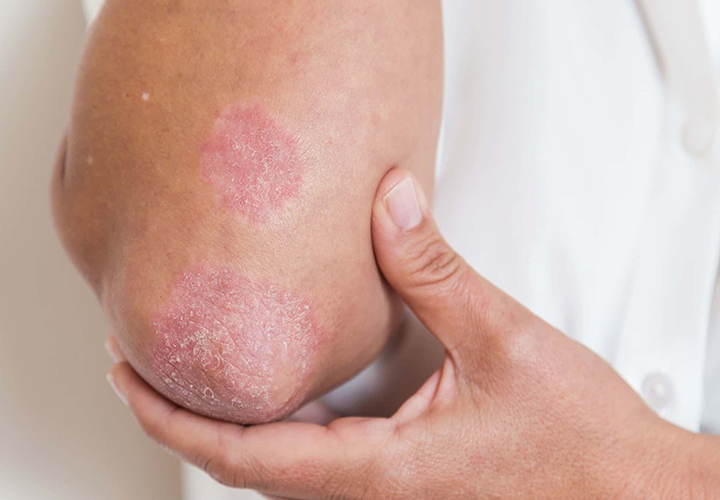Why Fungal Infections are More Common in Monsoons?
The arrival of the monsoon season brings relief from scorching heat and rejuvenates the environment. However, it also brings with it an increased risk of fungal infections. Fungal infections thrive in the warm and humid conditions of the monsoons, making them more prevalent during this time.
Dr. Monica Chahar of Skin Decor, who provides the best fungal infection treatment doctor in Dwarka explains multiple reasons that may trigger this condition. In this blog, we will explore why fungal infections are more common during the monsoon season.
High Humidity Levels
During the monsoon season, humidity levels soar due to frequent rainfall and moisture in the air. Fungi thrive in warm and moist environments, making the damp conditions of the monsoon an ideal breeding ground for fungal growth. The excess moisture on the skin creates an environment conducive to the proliferation of fungi, leading to an increased risk of fungal infections.
Sweating and Poor Ventilation
In the monsoon season, high humidity levels can cause excessive sweating. Sweating, combined with inadequate ventilation due to closed spaces or damp clothing, further increases the risk of fungal infections. Fungi tend to thrive in areas where there is limited airflow, such as between toes, under breasts, and in the groin region. The accumulation of sweat in these areas provides a favorable environment for fungal growth.
Contaminated Water and Soil
During the monsoons, there is an increased chance of exposure to contaminated water and soil. Fungi can be present in stagnant water, puddles, and moist areas. Walking barefoot or coming into contact with contaminated surfaces can lead to fungal infections. Fungal spores present in the soil can also come into contact with the skin, leading to infections such as ringworm or athlete's foot.
Weakened Immune System
The monsoon season is known for fluctuations in temperature, which can weaken the immune system. Additionally, viral and bacterial infections are more common during this time, and these infections can compromise the body's immune response, making individuals more susceptible to fungal infections. A weakened immune system may not be able to combat the growth of fungi effectively, allowing them to multiply and cause infections.
Improper Hygiene Practices
Maintaining proper hygiene is crucial to preventing fungal infections. However, during the monsoons, due to frequent showers, wet clothes, and dampness, it becomes challenging to keep the skin dry and clean. Poor hygiene practices, such as wearing wet clothes or not drying oneself properly, create an ideal environment for fungal growth. Neglecting hygiene in areas prone to fungal infections, such as the feet and groin, increases the risk of developing fungal infections.
Prevention and Treatment
While fungal infections are more common during the monsoons, there are preventive measures that can be taken to minimize the risk:
Keep the Skin Dry: Dry yourself thoroughly after showers and ensure that all body creases and folds are dried properly. Avoid wearing damp clothes and change into fresh, dry clothes as soon as possible.
Maintain Good Hygiene: Wash your hands regularly with soap and water, especially before handling food. Keep your nails clean and trimmed. Avoid sharing personal items like towels, socks, or shoes to prevent the spread of fungal infections.
Wear Breathable Clothing: Choose clothes made from natural fabrics like cotton, as they allow better airflow and help absorb moisture from the skin. Avoid wearing clothing that is too tight because it can trap moisture.
Use Antifungal Powders or Creams: Applying antifungal powders or creams in areas prone to fungal infections, such as between toes or in the groin region, can help prevent fungal growth.
Consult a Healthcare Professional: If you develop any symptoms of a fungal infection, such as redness, itching, rashes, or scaling of the skin, it is advisable to seek a skin doctor in Dwarka. A dermatologist can provide an accurate diagnosis and recommend appropriate antifungal treatments such as creams, ointments, or oral medications.
Conclusion
Fungal infections are more common during the monsoon season due to the warm and humid conditions that promote fungal growth. It is important to take preventive measures such as maintaining good hygiene, keeping the skin dry, and wearing breathable clothing to minimize the risk of fungal infections. If an infection does occur, timely consultation with a healthcare professional and adherence to prescribed treatments can help in effectively managing and treating fungal infections. Stay vigilant, adopt good hygiene practices, and prioritize your health during the monsoons to prevent the onset of fungal infections.
If you are looking for a Skin doctor in Dwarka, visit Dr. Monica Chahar at Skin Decor.



.jpg)
Comments
Post a Comment